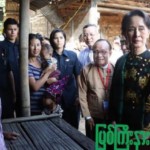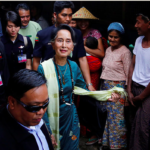Free Burma Rangers, June 18, 2013, Kachin State, Burma

Thousands of villagers in Kachin State and northern Shan State have been displaced from their homes for nearly two years by Burma Army advances and see little hope of an imminent return. This is in spite of ongoing talks between the Burma Army and Kachin Independence Organization (KIO) to resolve the conflict which has continued for over two years since 9 June 2011. While fighting in Kachin State is greatly reduced, clashes continue in northern Shan State as the Burma Army advances against Shan, Ta’ang and Kachin positions there.
Free Burma Ranger teams recently visited five Internally Displaced Person (IDP) camps in the KIA’s 3rd Brigade area, providing medical care and Good Life Club children’s programs in each camp. All together in these 5 camps live about 5,155 people, a fraction of the over 100,000 who have been displaced since 2011 in northern Shan and Kachin States. During this mission, the Government of Burma and the Kachin Independence Organization (KIO) held talks and released a statement on 30 May 2013, in which they “agree to undertake efforts to achieve de-escalation and cessation of hostilities” but did not agree to a formal ceasefire. IDPs staying in the camps said they wanted to return but could not do so while the Burma Army was still in and near their home villages. According to a leader at one IDP camp, “If we have safety and freedom in our land we can go back, but now we are not free or safe.” The Government/KIO statement mentioned agreement “to continue discussions” on repositioning troops but made no concrete plan.
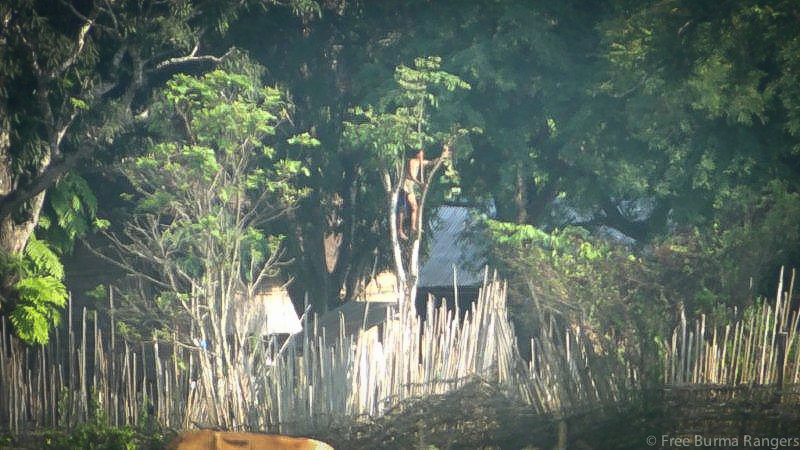
A Burma Army soldier looks out from Sakan Gyi Camp, located 6km from the nearest IDP site. (Photo: Free Burma Rangers)
The IDPs’ home villages feel like ghost towns; they are full of dilapidated homes and farms after two years of abandonment. A few people have chosen to return to their villages despite the risks. In Ma Gi Gun Village, eight of 48 families had returned after initially fleeing in December 2011 when the village was attacked by Burma Army Light Infantry Division (LID) 99. Ji Tawng, age 33, returned in May 2012 and since then has had to run from the village four or five times whenever Burma Army patrols came close. She said that living in the abandoned village is difficult and she does not feel safe, but prefers living in her home to living in the IDP camp.
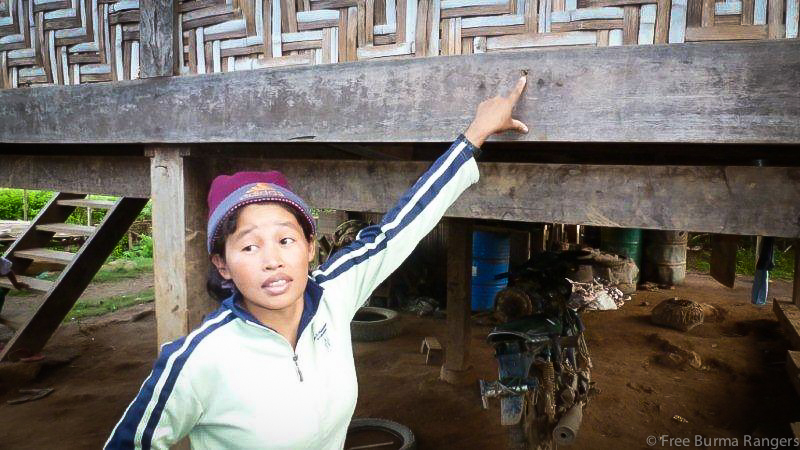
Ji Tawng stands outside her home and points to bullet holes from Burma Army attacks in December 2011. (Photo: Free Burma Rangers)
There are few reports of fighting in Kachin State since the Government/KIO talks. On 14 and 16 June 2013 in Northern Shan State, fighting took place between KIA soldiers and Burma Army troops from IB 242 and Burma Army proxy forces. The fighting occurred between Loilawm and Yinglar Villages in the KIA 4thBrigade area of control in Northern Shan State, which is adjacent to Kachin State. In the KIA 3rd Brigade area near La Kat Ko Village, on 5 June 2013, a KIA landmine exploded when a Burma Army unit moved in close proximity to a KIA position. On 8 June 2013 beginning at 10:10pm until 2:00am on 9 June, near Nam Hu in northern Shan State, there was a clash between a KIA local militia unit and Burma Army Infantry Battalion (IB) 128 that started when the KIA detonated a mine in response to Burma Army movement. On 10 June, IB 128 advanced on the militia’s position at Hpai Kawng, and the groups fought from 2:30pm to 3:20pm. Two Burma Army soldiers were killed. At 3:30pm, the Burma Army fired 60mm mortars from Kawng Sahte on the KIA position. Also in northern Shan State in June, there was one clash between the Burma Army and the Ta’ang National Liberation Army (TNLA) near Man Loi Village in Namsam Township, and another clash between the Burma Army and TNLA on 14 June near Long Gam Village in Kutkai Township.
“Now in our time of need you have come again”; 98-year-old Kachin man to an FBR team leader.
At one IDP site 894 men, women and children were gathered to join us in a Good Life Club and medical program. Our Kachin, Karen and Karenni Rangers sang, gave medical and dental care, performed educational programs and played with the children.
As we were greeting the IDPs at the beginning of the program, a bent-over old man walked in, leaning shakily on a stick. He was beaming and said, “Thanks so much for coming, I am so happy, I am so happy you Americans came again. You helped us when we needed it in World War II and helped us be free of the Japanese oppression. Now in our time of need you have come again.” As he shook our hands and thanked each of us I asked him how old he was. “I am 98 years old and thankful to be able to be here,” he answered.
Halfway through the program he grew tired, motioned me over and said, “I am too old, I love this but need to rest, and please excuse me”. He got up shakily but could only manage a few feet leaning on his stick before he was out of breath and strength and dropping to the ground, began to crawl. I went to him and lifted him up. I held him up and helped him get to his plywood, bamboo and tin shelter about one hundred years away. Upon arriving at his shelter he lay down, panting in front of the opening. After a short time, he sat up and smiled and told me, “Thank you so much.”
I was touched and also felt sadness and concern – sadness that we could not help him very much, and concern that some people were now considering sending military advisers to the Burma Army, the very army that had displaced him. He helped the US during World War II, loves Americans and trusts us.
It is good that the US and international community are involved with Burma, and there should also be an equal and just involvement with the ethnic groups at every level. If the international community is going to engage with the Burma Army, the 98-year-old Kachin man and his people need us to engage with them as well.
I prayed with him and then he prayed for me, a long, powerful prayer. As he prayed I felt I was in the presence of God and one of His special people. I saw that though his body was frail and wasting away, his spirit was strong and rose out of him. A great soul was here and he shone brightly. His humility, faith and joy lifted me up as I walked back to the program. I thanked God for the privilege of knowing this man and seeing the power of his soul.
At the same time in a different part of the camp, a group of young Kachin spoke of the same issues with two of the Rangers.
While exploring the area, we met several young Kachin volunteers who were working in the camp. They had come from government-controlled cities and had taken risks by crossing the battle lines to help the IDPs. There was a 31-year-old civil engineer from Myitkyina, the capital of Kachin State, who took a leave from his job to build a school and a water system for the camp. There was a 24-year-old woman from Bhamo, who was volunteering with a charity building toilets and delivering aid. There were other volunteers: a teacher, a medic, a relief administrator; all in their twenties and early thirties. I was impressed with all of them: all smart, educated, idealistic and taking risks to do something good for people in need.
We explained to them that the U.S. Government is considering extending certain types of training to the Burma Army and we asked them what they wanted to say to members of Congress about it. They said the US is welcome to get involved in Burma, but if they will only get involved with the Burma Army that will encourage the military to increase its oppression. The Burma Army will use US involvement to its own advantage. If the US wanted to engage not only with the Burma Army, but also with the ethnic resistance groups, then it could be a good thing.
They said that even in the government-controlled cities in Kachin State, most people support the KIO and KIA because they want there to be an organization and an army that stands up for them against the government. They said that there is, of course, a diversity of opinions and some people see the KIO as a negative influence, but most see it as their representatives standing against the oppression of the government.
One of the volunteers said, as a final comment, that what she really dislikes is that there are governments in the world that love their people and work to help them, but the Burmese government only takes away from the people to help themselves.
IDP Camp Information
Below is a compilation of information on each IDP camp that was visited, based on interviews from camp leaders and IDPs.
Support: Karuna Myanmar Social Services (Karuna) and Wunpawng Ninghtoi (WPN) provide support for the camp.
Health: Karuna provides basic medical assistance in the camp. Many people suffer from diarrhea. Seriously injured people are sent to Loije for care.
Education: School for K-5 is provided. Older children must go to Mai Ja Yang for further education. WPN is responsible for the school.
Prospects for returning home: Hka Hkye IDP Camp is right next to the Chinese border and only a few kilometers from Hka Hkye Village, but is far enough away from the Burma Army that they are not bothered there. Villagers feel they cannot return home while the Burma Army is still there.
Nam Lim Pa
Population: The camp has 894 people from 11 villages in the hills surrounding Nam Lim Pa.
People began arriving: 22 January 2013, but people have been displaced since 9 July 2011. Fighting started 9 July 2011 in this area and villagers ran then. In some of the villages there was fighting, in others the fighting was close to the village. First the IDPs hid in the jungle, and through 2011 and 2012 the KIO sent support to the hiding areas. On 22 January 2013 this camp was opened near Nam Lim Pa Village and the IDPs were moved here so that services such as schools and clinics could be provided to them.
Support: The camp is primarily supported by Karuna. United Nations High Commissioner for Refugees (UNHCR) and World Food Program (WFP) visited on 17 July 2012 and distributed tarps, family kits and medicine. The international awareness resulting from the UNHCR/WFP visit is an additional reason why the KIO felt it was safe to bring the IDPs together in a camp; the Burma Army is less likely to attack given this international exposure.
Health: The KIO supports a clinic in the camp.
Education: The first people to be moved to Nam Lim Pa were students in 2012, so they could attend school. However, the very young children remained with their families. This year they will open a K-2 school in the camp, so young children can attend school and stay with their families. Grades 3-8 attend school with Nam Lim Pa village children and board at the school. There are 28 teachers.
Mai Awng, one of the teachers at the school, was teaching five children in her home on 20 July 2011 at 8:45am when a Burma Army mortar round hit the house. One child was killed and others were wounded. She also was injured by shrapnel, and the wounds are still visible on her back nearly two years later. She continues to teach IDP children.
Needs: Security.
Prospects for returning home: The camp leader said they are waiting to hear more about the negotiated agreement and what it means. “If we have safety and freedom in our land we can go back, but now we are not free or safe,” he said.
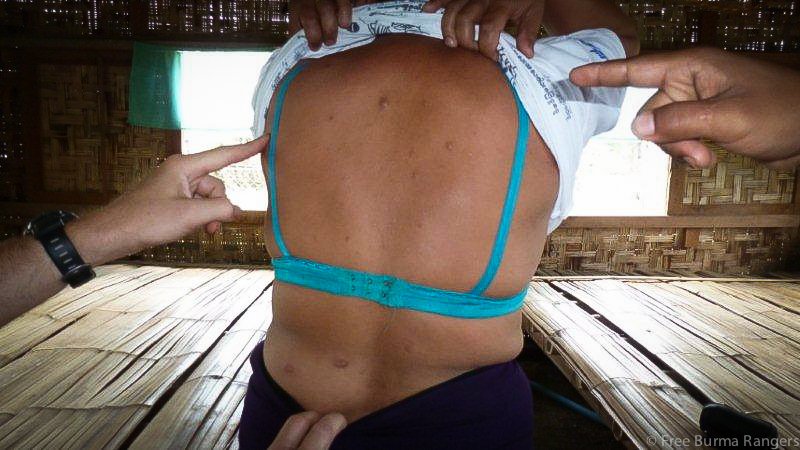
Kachin teacher wounded in Burma Army mortar attack that killed one of her students. (Photo: Free Burma Rangers)
La Na Zup Ja
Population: 2623 people from 63 villages, 40 of which had fighting inside the village
People began arriving: 30 November 2011. One person now living in La Na Zup Ja IDP Camp, Tsumhka Gam Bu, age 73, from Hinbuk Hka Pra Village, reported that his daughter, Tsumhka Roi Tawng, 32, had been shot dead by Burma Army soldiers from LID 99 on 4 December 2011. She had given birth 19 days earlier, and was hiding in bushes when the soldiers attacked the village. Another woman from the same village, Lashi Labya Tawng Mai, age 25, was raped and killed by Burma Army soldiers, and her body was found, undressed, in the bushes. Her mother, a widow, was shot in the buttock and was treated in a hospital in Bhamo Township. These incidents were previously reported by FBR in January 2012.
The most recent villagers to arrive came on 23 May 2013: six families from Manje Village.
Support: Karuna and WPN provide food for IDPs, and private Kachin and Chinese individuals have also contributed funds.
Health: There is one hospital for the IDPs, and also four private clinics nearby. WPN provides medicine for the hospital, though it is not always enough. There are no severe health issues at present.
Education: There is a school for IDP children up to eighth grade; if parents wish to continue their children’s education they need to send them to Mai Ja Yang for high school. The school has 41 teachers.
Needs: One current problem is that the IDPs have no source of income, so many are unable to send their children to school beyond what is offered in the camp. Some of the IDPs are able to find day labor jobs working in the fields of farmers living in the area. There is also a shortage of clothing and blankets, as well as a water shortage because the nearby river is polluted.
Bum Tsit Pa
Population: 832 people from 26 villages
People began arriving: 7 November 2011. There has not been a significant change in numbers since that time; and no new IDPs have arrived for six months.
Support: Karuna and WPN take primary responsibility for providing for the IDPs. A group of Chinese Buddhist monks came once to deliver 30 sacks of rice, and the UN came in March 2012 and provided two months’ worth of food and family supplies such as buckets and tarps. If charities cannot provide needed support, the KIO makes up the difference. Currently the IDPs have sufficient food.
Health: There is one clinic specifically for the IDPs and another clinic for the local village, both primarily supported by the KIO. There are no critical health issues at present.
Education: Children can get education up through fifth grade in the camp. Children above that level can attend school at La Na Zup Ja IDP Camp or cities such as Mai Ja Yang or Namkham.
Needs: According to the camp director, there are no critical material needs. He commented that the IDPs are worried about when they can go back to begin working again, and also worried about what will be left of their homes.
Lagat Yang
Population: 465 people from 109 families, from 15 different villages.
People began arriving: 12 April 2013. However, these people ran from attacks in 2011 and stayed in rice fields or with relatives until this camp opened. One of the camp leaders ran from his home of La Ka Taw Village on 6 November 2011. The Burma Army began attacks near his village on that day at about 10am. This village is on the Bhamo Road and it is not safe for them to go home because the Burma Army uses the road.
Support: The camp is supported primarily by Karuna and WPN, with additional support from Solidarités, a French organization.
Health: There is a basic clinic in the camp.
Education: There is a K-4 school with 80 students. There are 5 teachers for nursery and 6 for primary.
Prospects for returning home: They cannot say when they can go home. Someone stepped on a landmine near Na Lon and Nam Hkai Villages near their homes. (This was the 5 June landmine incident reported above.) They are afraid to go back.
UN aid convoy arrives
A 10-truck convoy from the UN arrived to Mai Ja Yang to bring relief supplies on 14 June 2013, made possible by negotiations between the Government of Burma and the KIO. The convoy brought one month’s worth of relief supplies to Pa Kahtawng IDP Camp, temporary home of 3,320 people. WPN and other Kachin organizations are taking care of the needs of IDPs year-round and it is not clear if there will be any other further UN shipments beyond this one-month supply to this one camp. While there have been positive developments such as this aid convoy, reduced fighting and continued talks between the Government and KIO, more than 100,000 people in at least 47 sites remain displaced after two years of war, uncertain when they can return home and rebuild their lives.
God bless you,
Kachin Free Burma Rangers


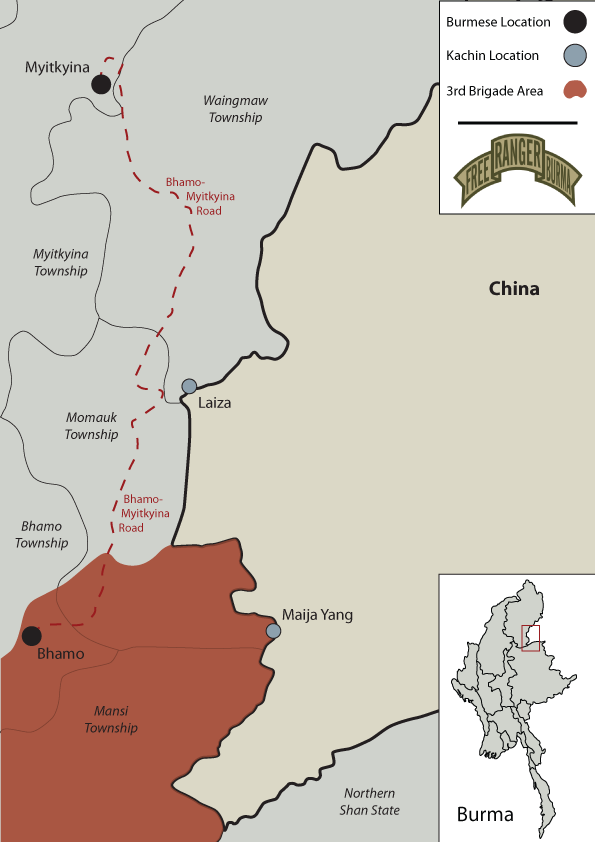
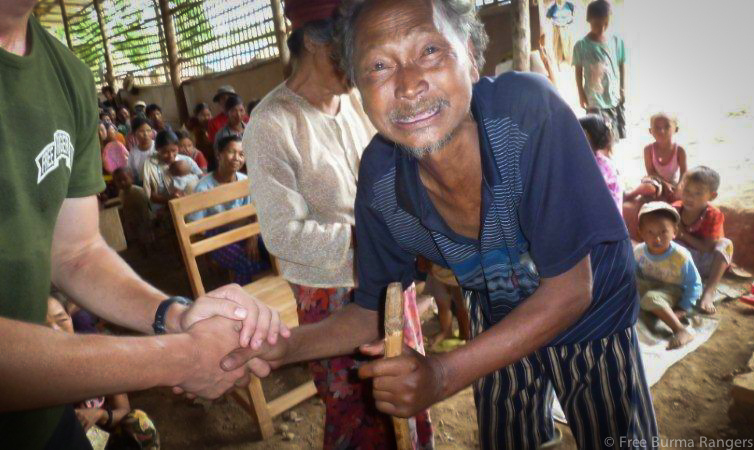
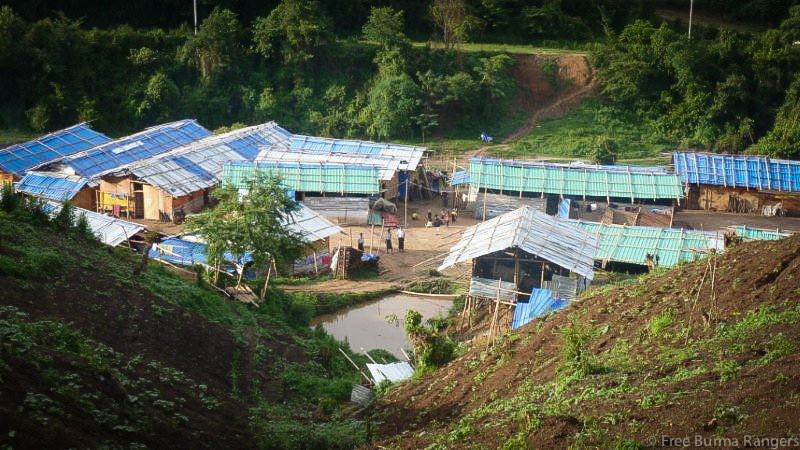
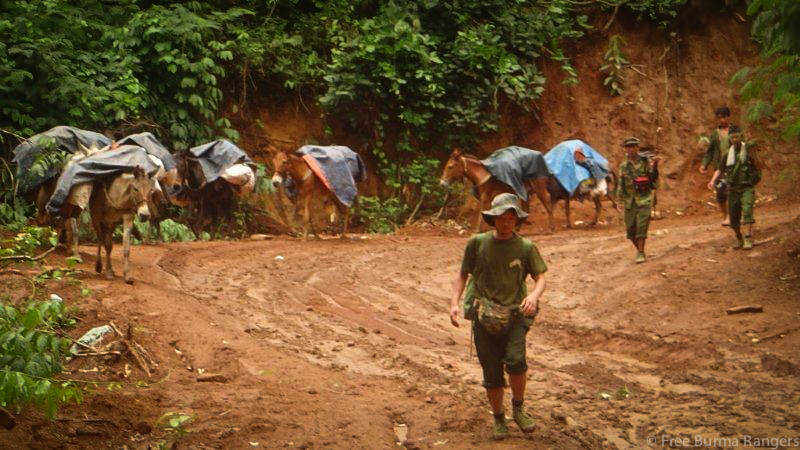
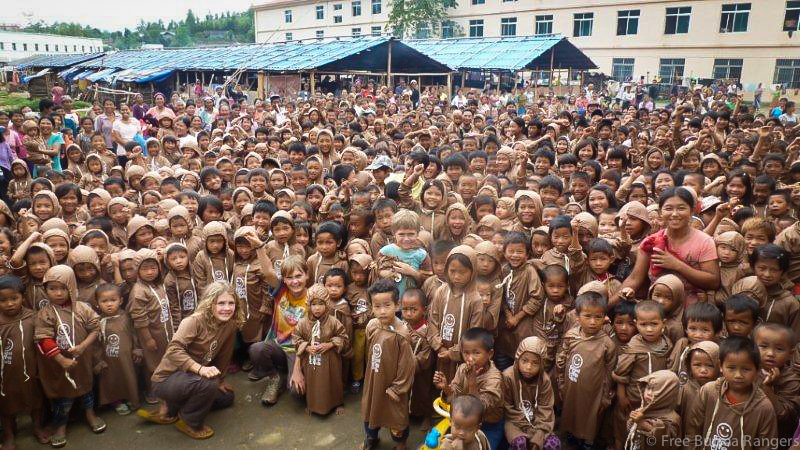
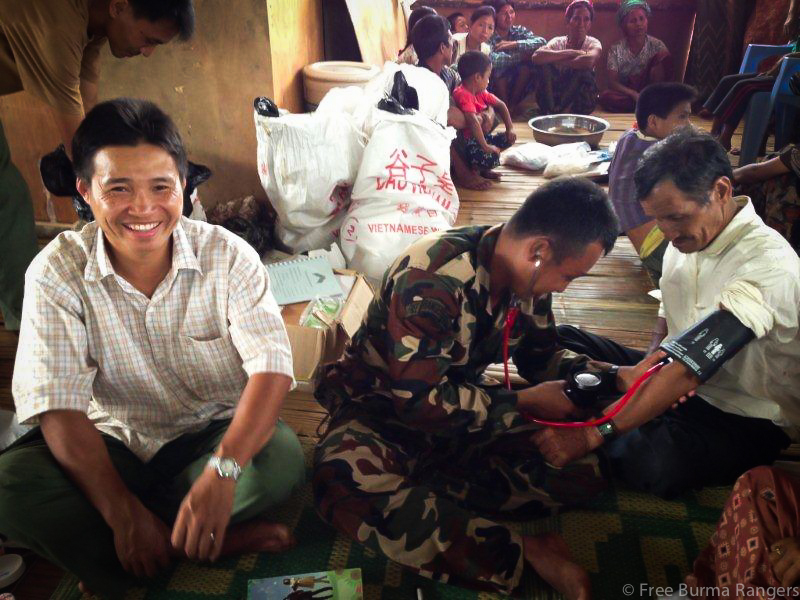
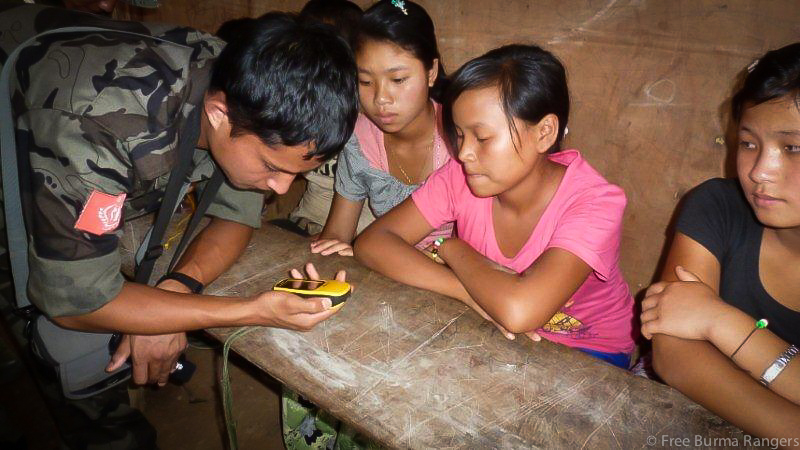
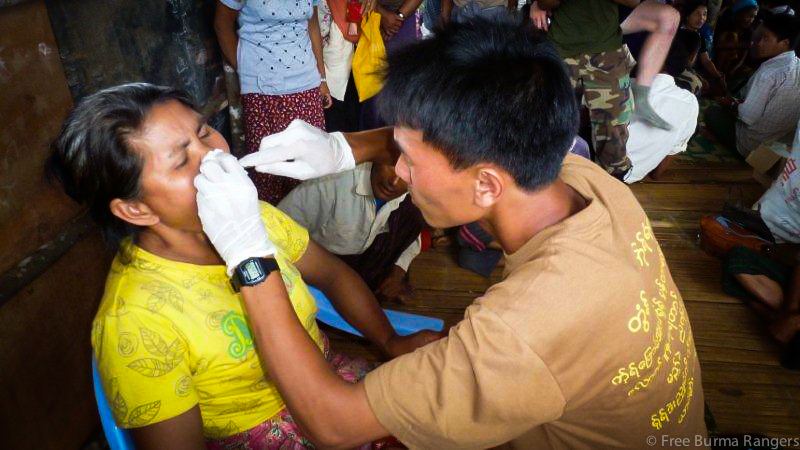
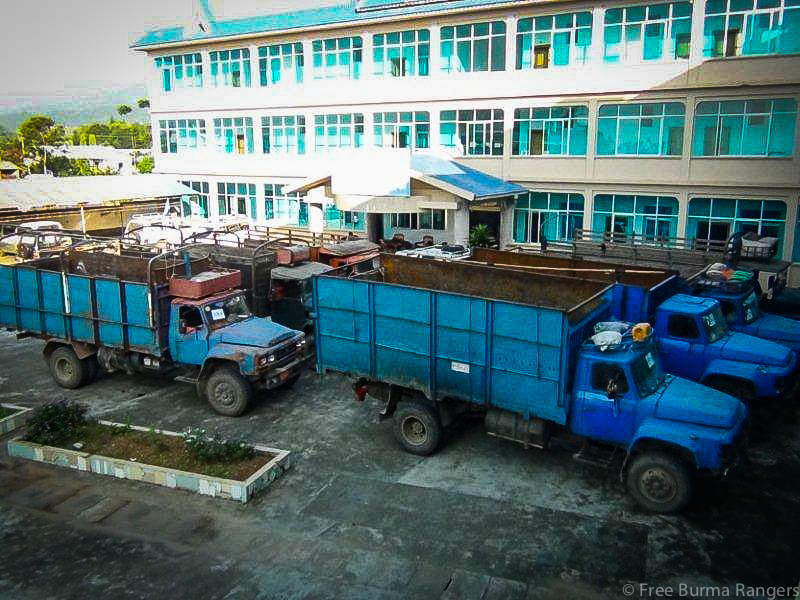
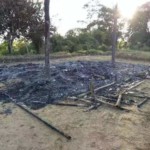
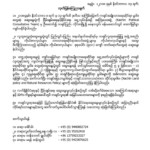
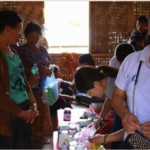
![‘We Need More [International Support] in Kachin State’: Ah Ze, General Secretary of AKYU — PART 2](https://www.burmalink.org/wp-content/uploads/2018/10/Ah-Ze-in-Kachin-State--150x150.jpg)
